Angela’s jotted music manuscript notes, along with the only known tape-recordings of her singing and playing her English concertina in 1967, reveal how Angela’s early enthusiasm for folk-song was developed throughout the nine years she lived in Bristol. Sparked at age 19 in 1959 by a riotous night of music at a Sussex pub “do” in the company of her first husband Paul Carter and his fellow musician and sound-recordist Reg Hall, Angela became involved in the left-wing movement to rescue oral music traditions from their post-war decline. The “do” would later be the model for Angela and Paul’s second Bristol folksong club.
The folksong revival was being enabled by small recording companies like Topic Records, who in 1960 approached Paul with sound-recording projects. It is little-known that for the next eight years Angela accompanied Paul on many of his field-recording trips. She met the finest of older-generation singers from authentic oral traditions at their own firesides in secret locations around Britain and from 1964, around rural Ireland. The projects were always shrouded in professional secrecy until the discs were issued, and Angela, writing sleeve notes for Topic, was well aware of this.
“One was supposed never to ask where they’d gone during their academic breaks; we guessed they’d be up some rutted track with the recording machine in the boot, and wait for months to hear about an outcome. I was one of the lucky kids to whom Paul later passed his spare vinyl copies.” (Christine Molan, who joined Paul and Angela’s first folksong club on the wave of the Centre 42 culture-fest of 1962)
The master-tapes, and Paul’s earlier recordings from the late 50s, were the fuel for Angela’s studies at Bristol University, for her undergraduate dissertation* and for her own singing. In 1964, for an article prophetically entitled ‘Now is the Time for singing’ for Bristol University’s Nonesuch Magazine, Angela meticulously detailed the individual artistry of named singers, concluding
“One learns more about style from listening to the wild and passionate singing of tinker singer Davy Stewart …than one will ever learn from looking at books”.
The 1964 article heralded Angela and Paul’s unexpected side-turn from the popular folk-scene. They’d been running the club Ballads and Broadsides at the Bear in Hotwells, hosting visiting singers from the revival circuit. After handing in her dissertation in early 1965, Angela with Paul, sought a quieter venue for singing and sharing the long ballads which she’d been discovering. She’d try the unaccompanied styles of singing she’d heard- like the elusive techniques of Romany singer, Phoebe Smith.
The new fortnightly sing-around session was held at The Lansdown pub in Clifton. Younger singers from the Bear were invited to join them, including Christine Molan who writes:
“I recall us all wandering up the stairs to this old-fashioned masonic room, ash-trays and big smokers bow chairs, perfect for long ballads and instrumental sessions, old-time polkas and waltzes. It was communal, laid-back and jokey. Paul played banjo, Angela, English concertina. Like many of us, Angela learned by ear from recordings, using her instrument to notate the musical phrasing – an aid to memory”
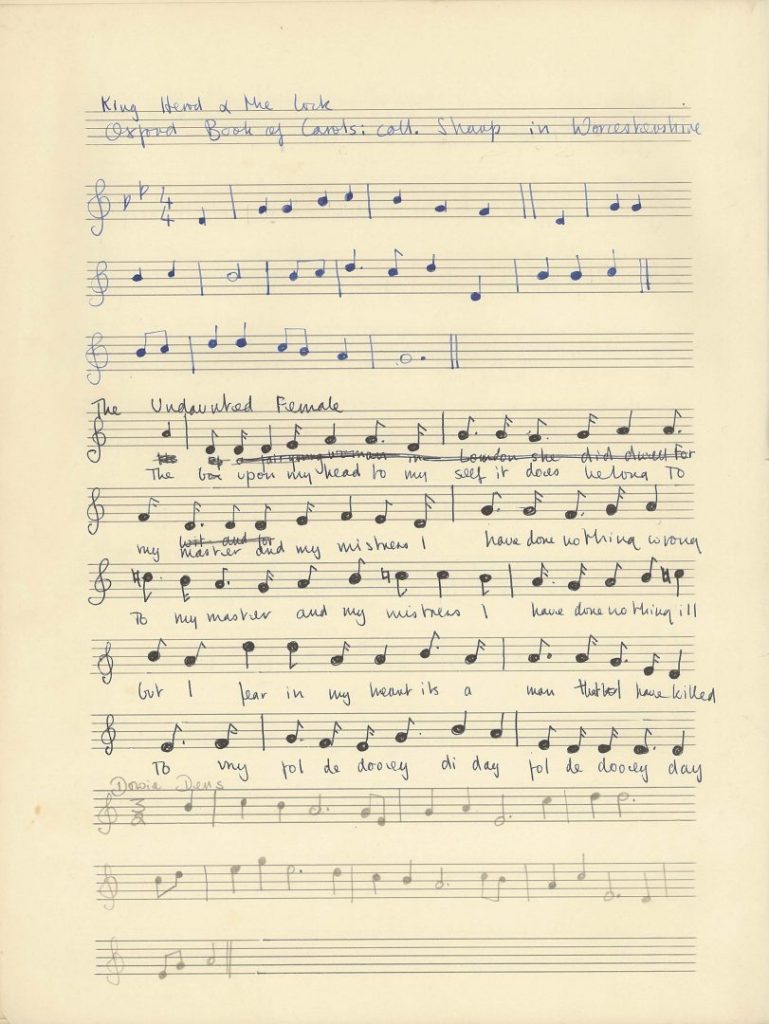 |
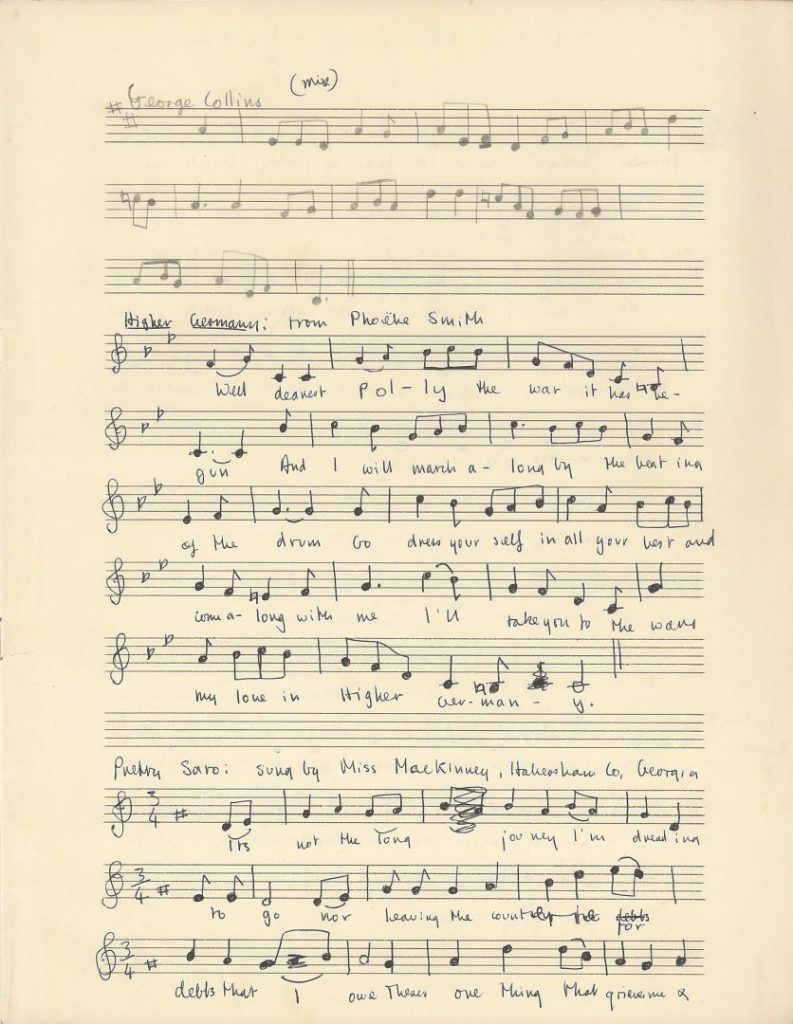 |
IMAGES: 1960s music manuscript exercise book in which Angela notated in pen rather than her usual (more faint) pencil.
SONG 1: Left-hand page is Angela’s notation of a popular 18th century broadside ‘The Girl With The Box On Her Head’ -which she sang. This tune is notated with Angela’s distinctive lollipop crotchets.
SONG 2: Right-hand page, Angela again notates from recordings, here naming legendary Romany singer, Phoebe Smith.
The importance of Angela’s musical notation and her interest in musical phrasing can’t be underestimated. Alongside the tape, her hand-written notes are probably the only evidence in existence of Angela’s study and early practice as a singer/storyteller. Her later trips with Paul to Ireland, where she witnessed storytelling running in and out of song, probably accelerated her fascination with folk tales. Indeed, “Lucy Wan“, the folk sung which she is seen singing in Chris Molan’s drawing in the About page, demonstrates a possible link with Carter’s “The Bloody Chamber”.
TEXT: Christine Molan 2016.
The Strange Worlds Exhibition makes available for the first time, the only recording of Angela Carter singing and playing. She plays a medley of English polka tunes (2.28 mins) on the English concertina, on which she accompanies herself singing “The Flower of Sweet Strabane” (2.47 mins). Recording by Denis Olding, 15 January 1967. Loan courtesy of Christine Molan.
* Angela took for her subject an English folksong ‘The Streams of Lovely Nancy. The piece entitled: ‘Some Speculations on Possible Relationships between the Medieval Period and 20th Century Folksong Poetry’ May 1965
IMAGES: © Christine Molan
Featured image, top: Angela Carter playing the concertina at the Lansdown Sessions, in Bristol 1967 / Pen and wash drawing / 2016
Below: Country dance tunes, Reg Hall and friends / Oil / 2012
courtesy the artist

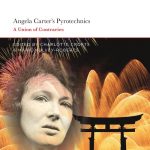

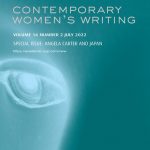
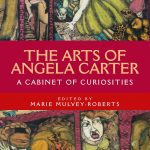
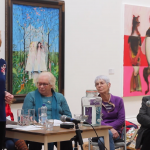
1 Pingback